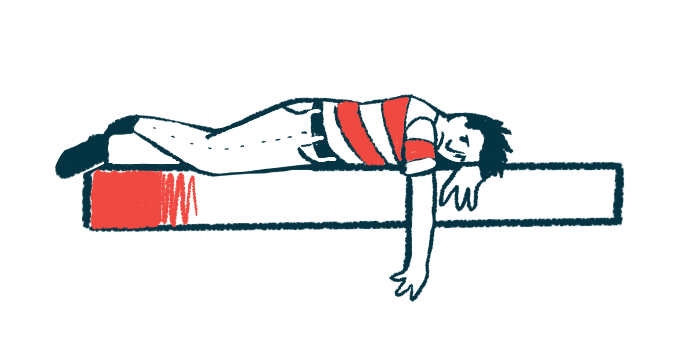Sexual Problems Nearly 4 Times More Likely for Hemophilia Patients

People with hemophilia are nearly four times more likely to experience sexual problems than are individuals without bleeding disorders, according to the results of a new international survey.
The survey found that problems with sexual intimacy in patients with hemophilia were associated with older age, experiencing acute or chronic pain in the previous year, bleeds within the prior two weeks, and limited joint range of movement.
According to the researchers, these findings “highlighted the associations between hemophilia related problems and sexual health,” and emphasize the need to include sexual health problems in hemophilia care, research, and health policies.
“It will be imperative for initiative programs or policies to assess and improve the sexual health of [people with hemophilia] in comprehensive hemophilia care,” the researchers wrote, noting that “sexuality is a crucial component of human beings.”
The study, “Evaluation of the sexual health in people living with hemophilia,” was published in the journal Haemophilia.
The team of researchers, led by investigators at McMaster University, in Canada, noted that having a healthy sexual life is important for relationships, self-worth, and overall well-being. However, people with poor health and chronic conditions have been found to experience problems with intimacy, including a lack of interest in sex and difficulties with sexual functioning.
Very little is known, however, about the sexual health of people with hemophilia. Information on this issue is crucial to guide doctors on how to provide better care and improve patients’ quality of life, according to the researchers.
To assess the prevalence of sexual difficulties in hemophilia patients, and to determine contributing factors, the team analyzed data from the Patient Reported Outcomes Burdens and Experiences (PROBE) study (NCT02439710).
The PROBE initiative is a data collection network that features a 29-item questionnaire designed to provide hemophilia patient organizations with information on patients’ health status and quality of life.
A total of 3,979 adults were enrolled from 48 countries between January 2016 and February 2017. From these, 2,007 were people with hemophilia, and 1,972 were participants who did not have any bleeding disorder.
Nearly all the hemophilia patients (95.3%) were male. A male predominance also was seen in the group of people who did not have any bleeding disorder, of whom 67.9% were men.
Participants in both groups had a similar mean age, around their early 40s. In the group of patients with hemophilia, the majority had severe disease (69.6%), followed by those with moderate (16.3%) and mild hemophilia (14.2%).
Most patients had hemophilia A (81.8%), while less than a fifth (18.2%) had hemophilia B.
A total of 302 hemophilia patients (15.1%) and 79 people with no bleeding disorders (4.0%) reported experiencing sexual difficulties. In general, this indicated that people with hemophilia were 3.82 times more likely to experience sexual difficulties than were people without bleeding disorders.
Among hemophilia patients who had experienced health problems in the prior year, sexual issues were 4.25 times more frequent, the results showed. Analyses also indicated that both patients who in the prior year had used mobility aids or assistive devices, or used pain medications, had a more than two times greater likelihood of experiencing sexual problems.
Additionally, hemophilia patients who experienced acute or chronic pain were three to six times more likely to have sexual difficulties.
“Pain has direct and indirect effects on sexual functioning,” the researchers wrote, noting that concurrent psychological difficulties can add to the problem.
“Psychological problems, for instance, depression, anxiety or decreased interest of sex, may contribute to sexual difficulty in people who concurrently have pain,” they wrote.
Next, the team evaluated the impact of having additional diseases on sexual function. They found that sexual difficulties were approximately two times more likely to occur in hemophilia patients who also had hepatitis B, hepatitis C, HIV, a history of stroke, high blood pressure, diabetes, arthritis, and gingivitis.
Additionally, the odds of sexual problems were nearly two times higher in hemophilia patients who had severe disease.
Independent factors that were associated with more frequent sexual problems among hemophilia patients included older age, experiencing acute and/or chronic pain in the previous year, and reduced range of motion in any joint.
Bleeds also were a problem. The results showed that people with hemophilia were more likely to have more frequent sexual problems if they had experienced bleeds within the prior two weeks, or if they had had life- or limb-threatening bleeds in the prior year.
Overall, the findings indicated that “sexual difficulty is much more prevalent among [hemophilia patients] than [people without a bleeding disorder],” the researchers wrote.
“To the best of our knowledge, no other studies have been conducted to examine sexual health in a large sample of [hemophilia patients] across various countries,” they wrote.
The team noted that one of the limitations of the study was not investigating the specific types of sexual issues patients experienced, for example, whether their difficulties involved a lack of sexual interest, sexual anxiety, or difficulties during intercourse.
“Longitudinal studies with more comprehensive assessment are needed to determine the underlying problems related to sexual difficulty in [people with hemophilia],” they wrote.








